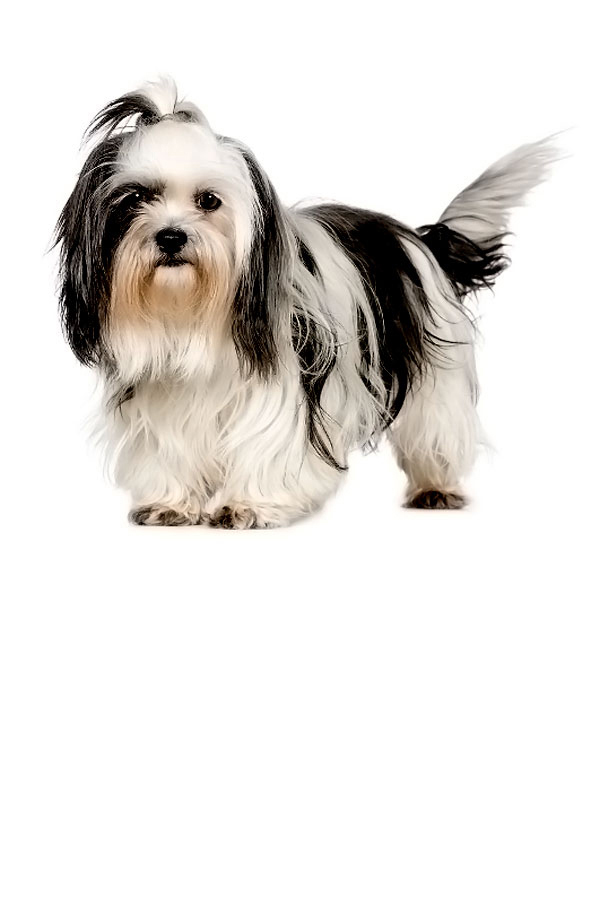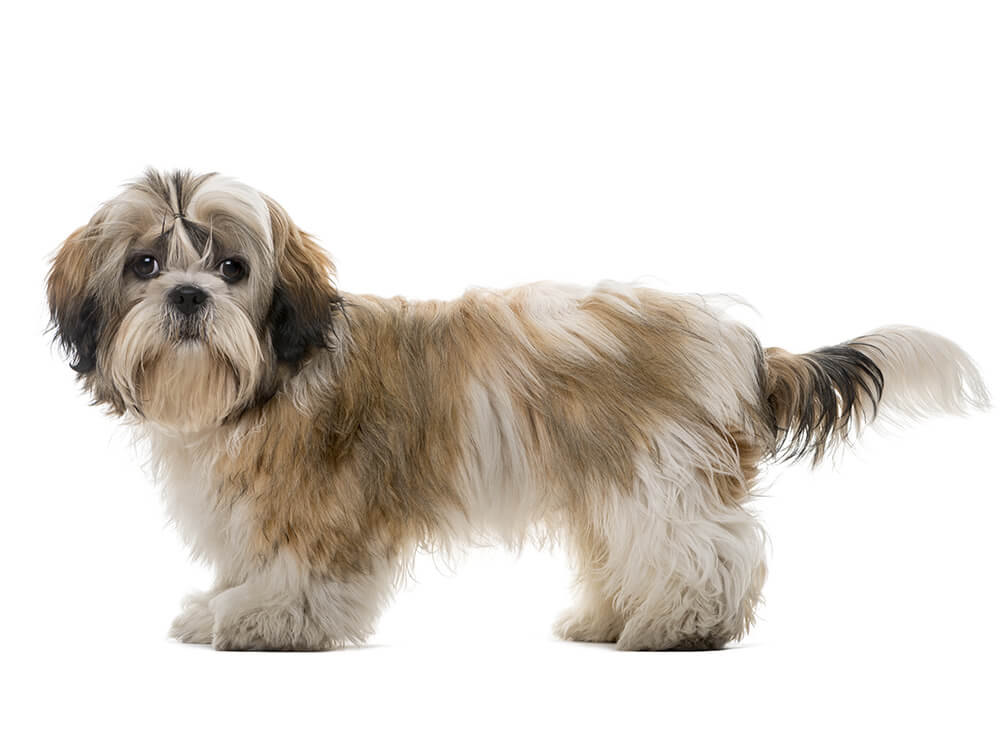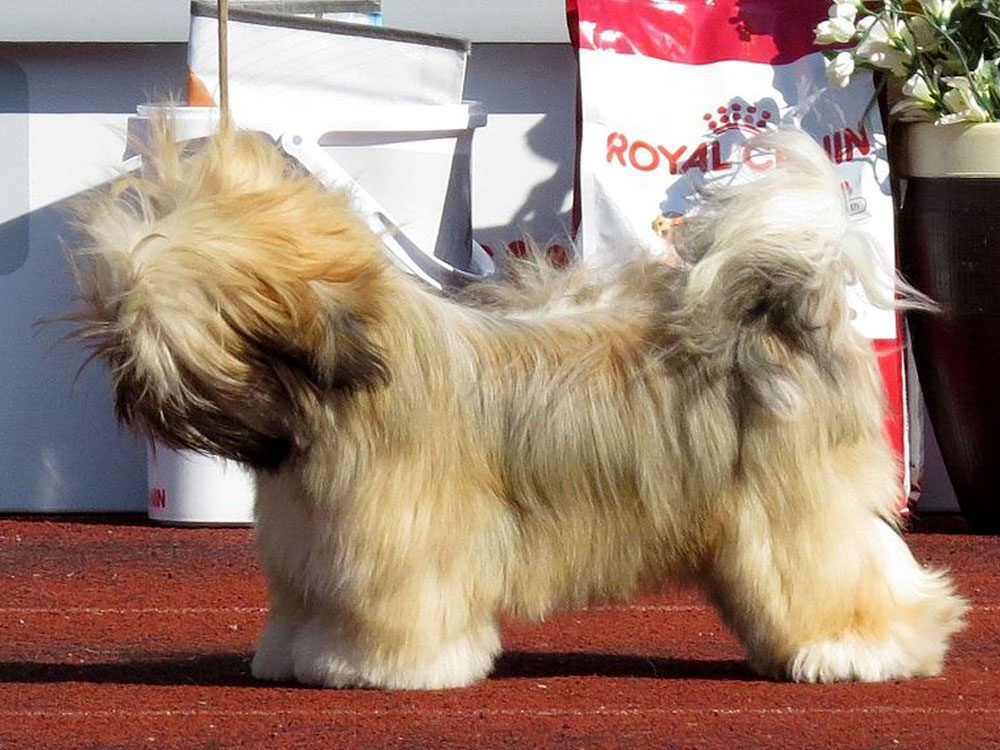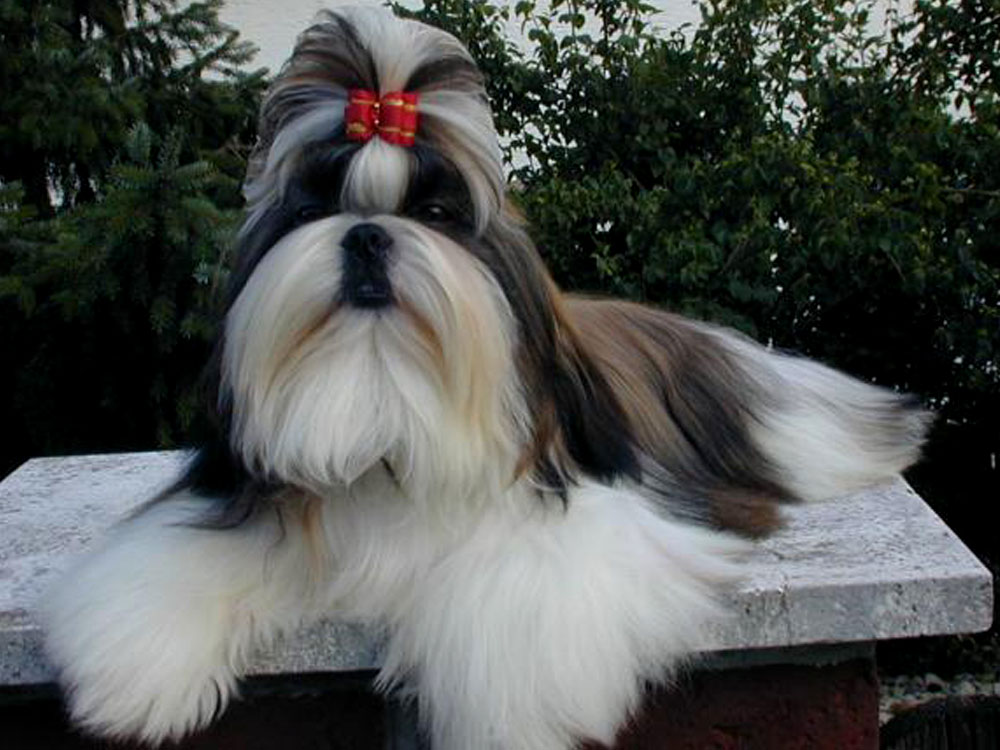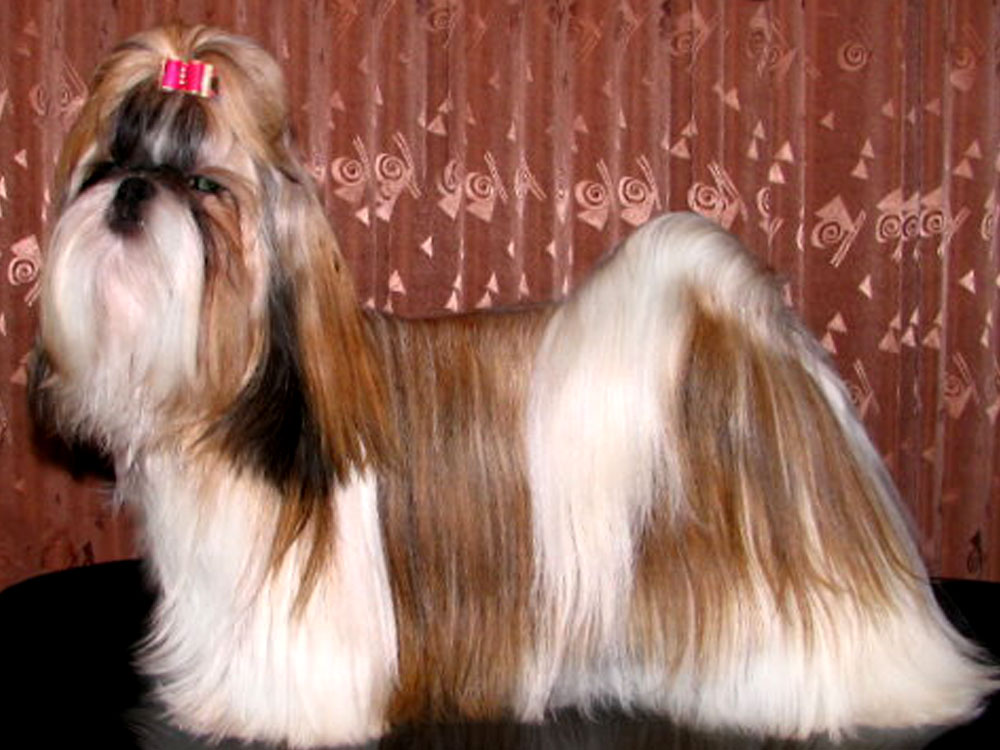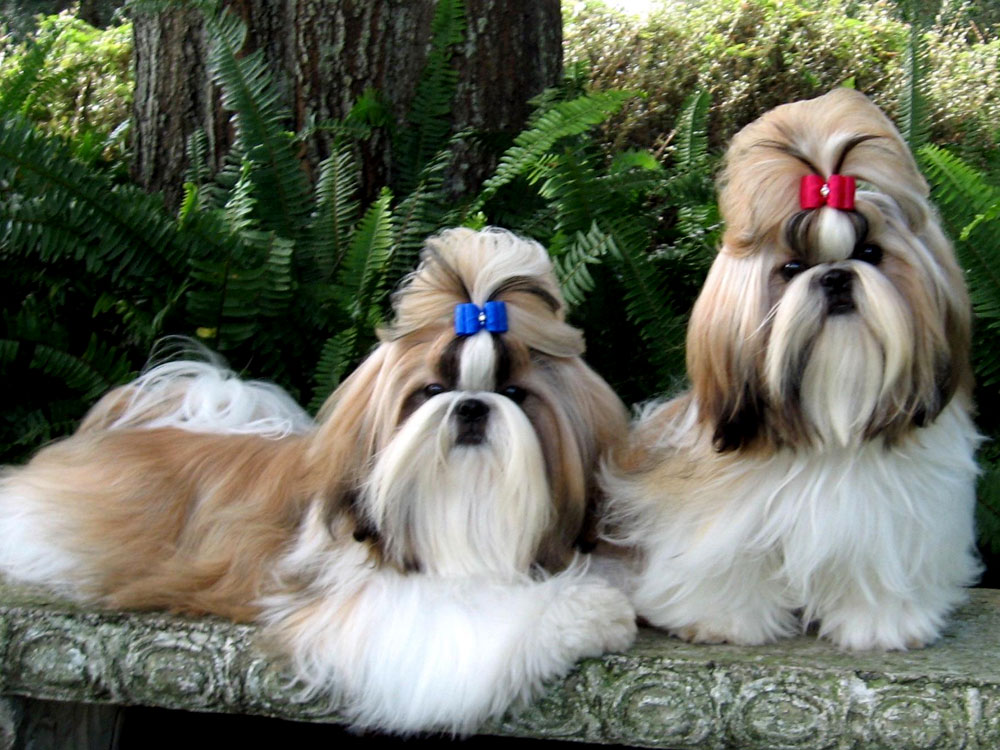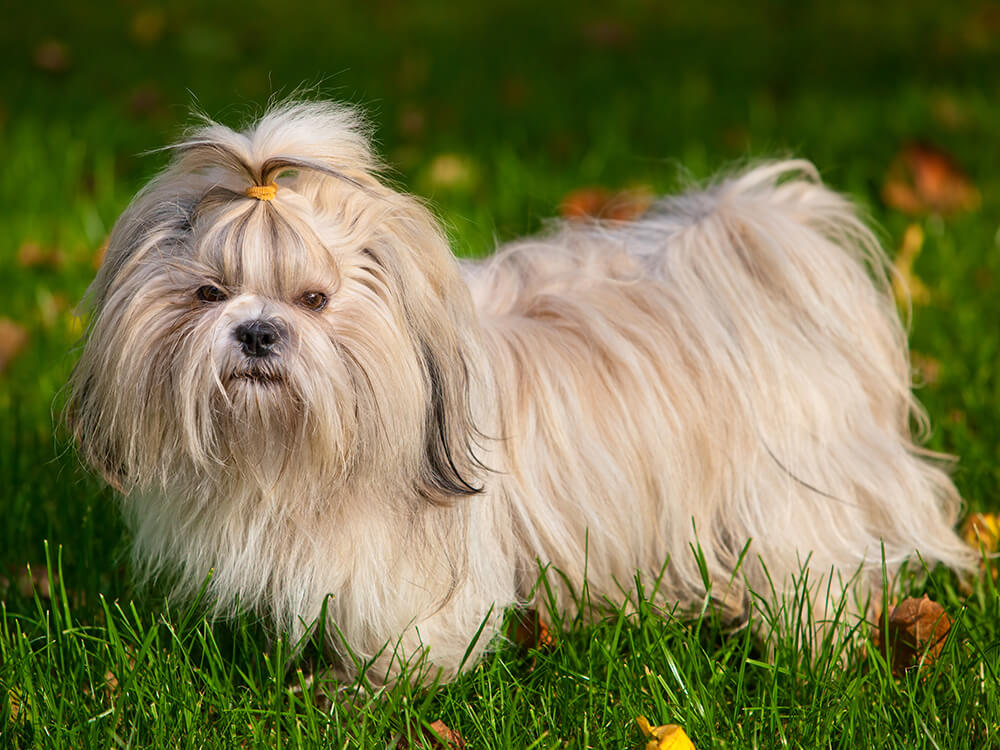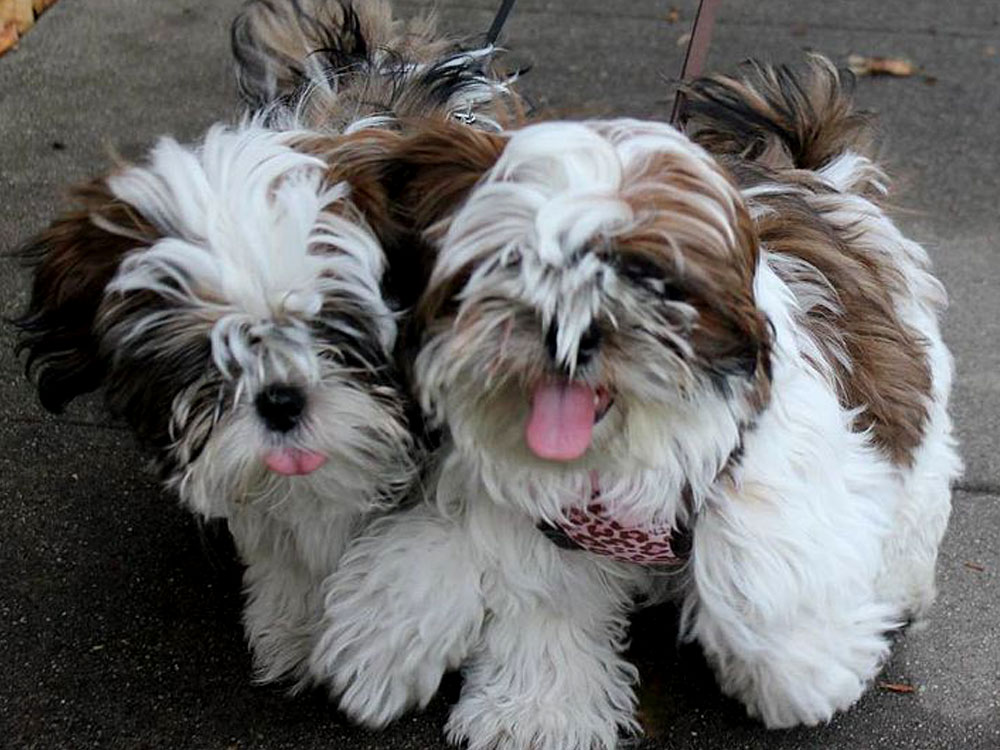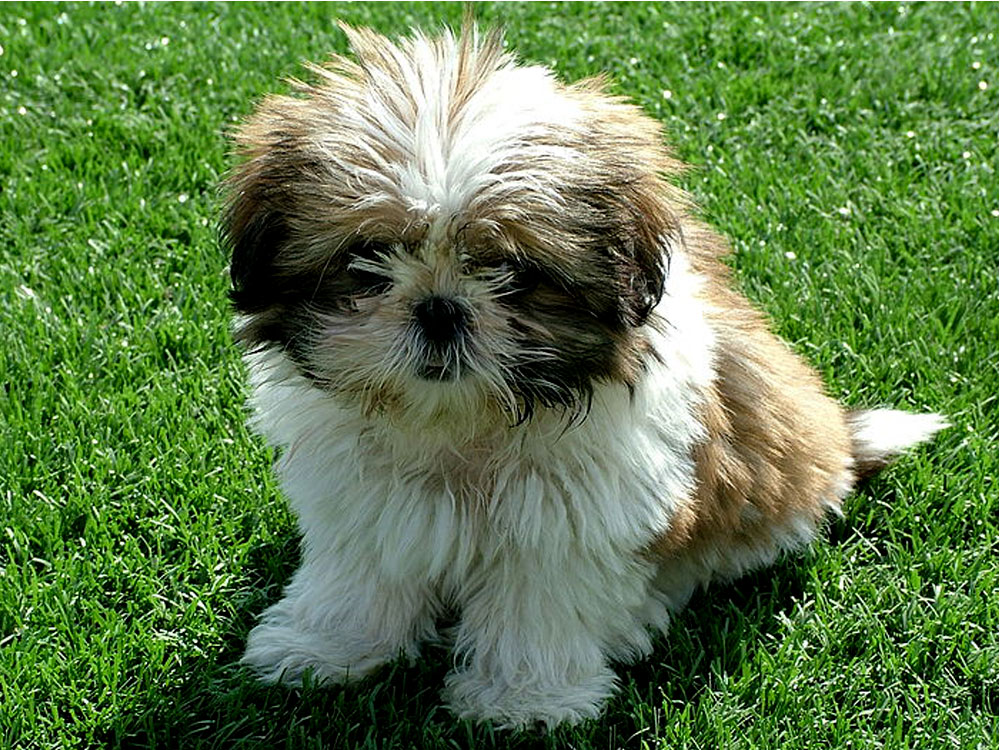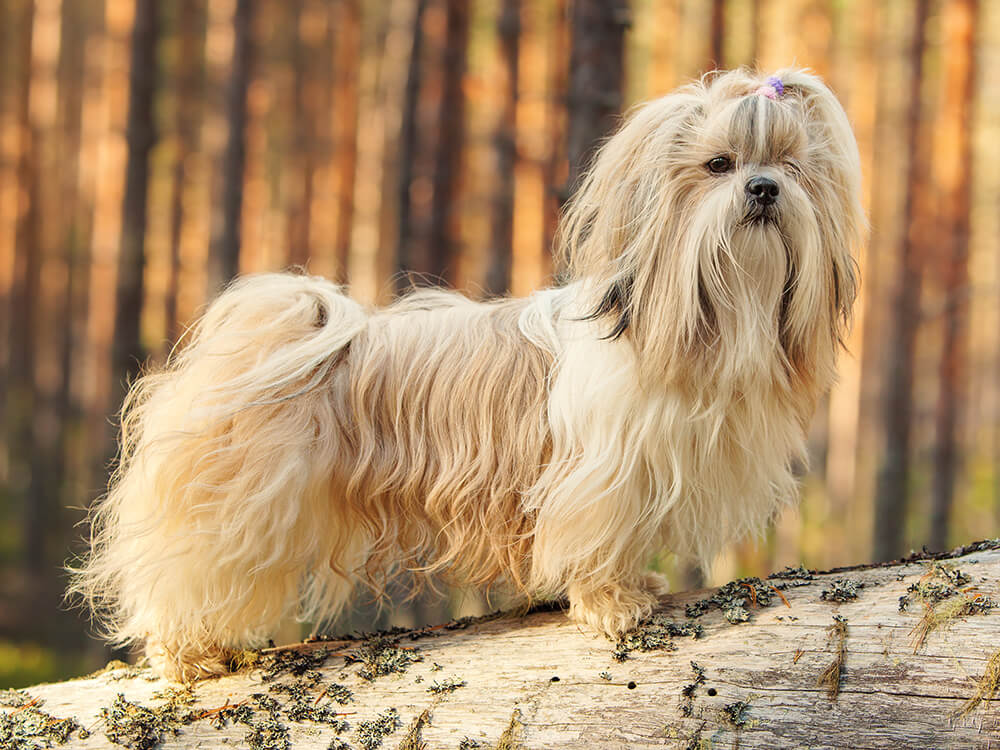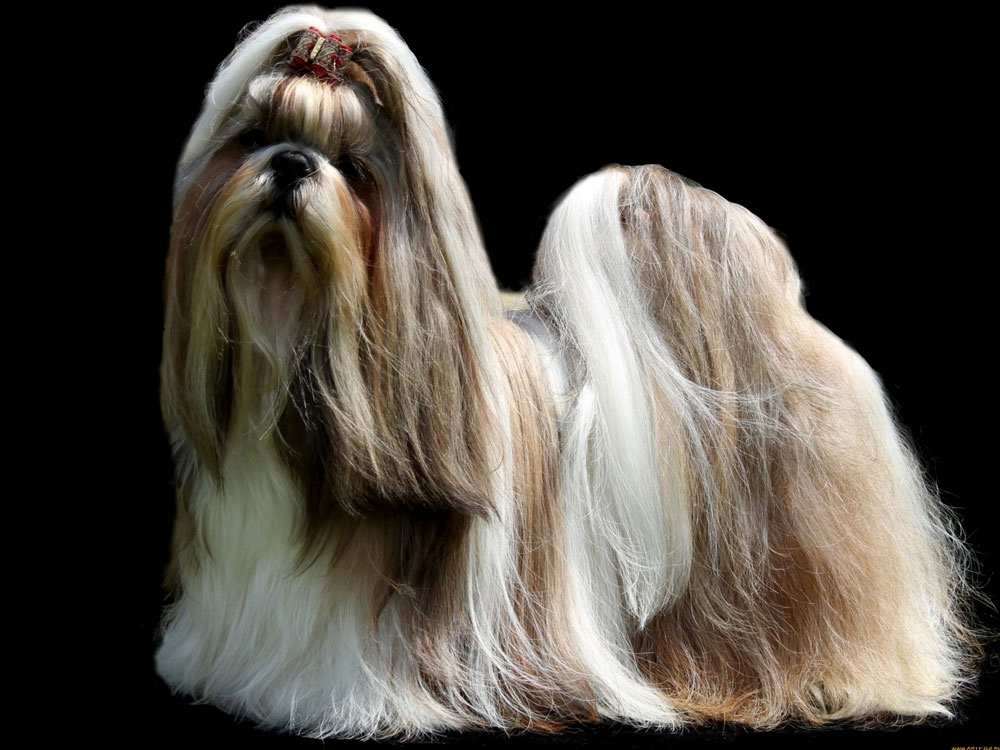
Shih Tzu Breed Pictures
Vital Breed Stats
| Height: | 20 - 28 cm M | 20 - 28 cm F |
| Weight: | 4 - 7 kg M | 4 - 7 kg F |
| Life Expectancy: | 15 - 18 years |
| KC Registered: | No |
Breed Characteristics
| Size: |  |
| Grooming: |  |
| Exercise Level: |  |
| Trainability: |  |
| Barking Level: |  |
| Good with Children: |  |
| Good with other pets: |  |
| Affectionate: |  |
| Protective: |  |
| Cost to Keep: |  |
Give a thumbs up if you love the Shih Tzu

0
More About the Breed
History
There are varying theories behind the origin of the Shih Tzu. According to a recent study, it is one of the oldest dog breeds whose ancestors existed since 8000 BC. Its DNA analysis indicates it is a close descendant of wolves. It is believed that this breed was developed by Tibetan monks in China by crossing the Pekingese and Lhasa Apso. Lions are usually associated with Buddhism but since they were not indigenous in China, they bred the Shih Tzu, which literally means “lion dog.” These “lion dogs” with chrysanthemum-like facewere given as gifts to Chinese royalty and became cherished companions.
In 1861, the breed became popular in the Imperial Court because of Empress T'zu Hsi, who was an animal lover. She developed extensive breeding programs and received a pair of high quality Shih Tzus from the Dalai Lama. In the early 1900s, royal families competed secretly to produce various coats and colours of this breed. The first pair of Shih Tzus arrived in England through Lady Brownrigg in 1928. The Shih Tzu Club of England was founded in 1934 and the breed was officially recognised by the Kennel Club in 1940.
Appearance
The Shih Tzu is a confident- and sturdy-looking pooch. It weighs between 9 and 16 pounds and stands 20 to 28 centimetres at the withers. It has a broad and round head with large dark eyes and big ears. It is known for its beautiful beard and whiskers. The hair on its muzzle grows upwards, which gives it is chrysanthemum-like face.
The breed is distinctively known for its long and silky coat that comes in various colours and colour combinations. It usually comes in black, black and white, gold and white, brown and white, liver and white, and red and white. Merle is considered highly undesirable.
Grooming
Shih Tzu's fine and soft coat is considered hypoallergenic. However, maintaining its gorgeous locks takes a lot of work. Owners need to brush its hair, which should be done in sections, a few times per day to avoid tangles. Bathing should also be done at least once a week. It is advisable to take it to a professional groomer that knows how to handle its hair needs. Should you decide to clip it short for easy maintenance, it should be done very six to eight weeks.
The Shih Tzu’s silky coat locks may require full attention but its nails, ears and other parts also need a little dedication. Its nails should be trimmed regularly, ears checked weekly for dirt or signs of infection and teeth should be brushed at least twice or three times a week.
Temperament
Intelligence
The Shih Tzu is intelligent but tends to be stubborn when it comes to training. It can be difficult to house train. Since it is not a naturally active dog, its training should focus on basic commands and socialisation. Consistency and positive reinforcement consisting of praises and treats will help.
Each dog breed is unique despite its pre-disposition in terms of intelligence and temperament. Genetics, environment, early socialisation and training play a big role in shaping its personality and abilities.
Nutrition
As a dog owner, see to it you to understand the basic nutritional needs of your Shih Tzu as a breed while still considering its individual characteristics.
Typical calorie needs of adult Shih Tzus per day:
- Senior and less active: up to 280 calories daily
- Typical adults: up to 320 calories daily
- Physically active/working dogs: up to 540 calories daily
Feeding
Health
Exercise
Cost of Ownership
It is but practical to know how much a dog owner will potentially pay for getting a Shih Tzu. Dog ownership is, after all, a huge responsibility. It is also a significant purchase considering other related costs that come with raising it. A puppy will cost around £400 - £1,000. Pet insurance will have you shell out £19 - £40 a month depending on several factors that insurance companies consider. Other costs include food which is about £30 - £40 a month, veterinary costs for health checks which may cost over £800 annually. If you look at it on a monthly basis, you will spend roughly about £60 - £100. This cost estimate excludes special veterinary treatments for health issues.
Shih Tzu Breed Highlights
- The Shih Tzu is a small but strong and sturdy dog.
- It does not require a lot of outdoor exercise.
- It sheds less than other breeds and is hypoallergenic.
- Prone to health problems associated with its short face.
- It is a housedog and can live comfortably in city apartments.
- It is a mildly stubborn dog and is difficult to housebreak.
